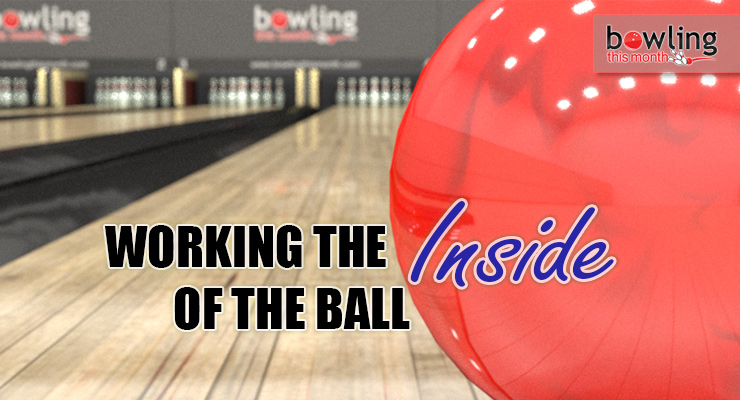One of the most bandied about terms in modern bowling is “working the inside of the ball.” Rarely does a PBA telecast go by where Randy Pedersen is not extolling its virtues. Internet bowling forum participants and serious league bowlers use it casually with very little understanding of its true importance and relevance to their own games.
With this in mind, I decided to tackle this important topic in a different kind of way. First, I want to look at its true importance to bowlers. Second, I want to give an honest perspective on how to achieve it, should you decide that it’s important to you. With this in mind, let’s get started.
What does “working the inside of the ball” allow you to do?
Working the inside of the ball lets you do one thing that you cannot easily do without it, and that is to project the ball from left to right (for a righthanded bowler). Projecting the ball from left to right allows you to play deep inside lines. Your need to play deep inside lines is the one determining factor in deciding whether or not learning to play the inside part of the ball is worth the time and effort for you.
If you bowl exclusively in leagues, on typical house shots, with typical league bowlers who play around the second arrow almost exclusively, there is really no reason for you to put in the time and effort to learn to work the inside of the ball. If everyone else in the league is going to stay on the outside part of the lane, you can move a little bit left to find fresh oil and be very successful with a traditional release.
The same can be said for house leagues with younger, higher average bowlers who regularly play inside lines with high rev rates, as long as those bowlers are the minority in the league. Even if you bowl occasional leagues on sport shots or participate in small local tournaments on sport shots where most of the participants are house bowlers, you can be fairly successful with a traditional release.
The primary factor in whether you need to play deep inside lines is the bowlers with whom you bowl. Let me give you a couple of examples that I have observed recently here in Las Vegas.
First, in a high average scratch league, I observed a 230 average senior bowler who was asked to sub during one night’s competition in a league ...
This article is only available to Bowling This Month subscribers. Click below to get instant access to this article and all of our other premium instructional content.
Subscribe to Bowling This Month
Already a Bowling This Month subscriber? Click here to log in.
